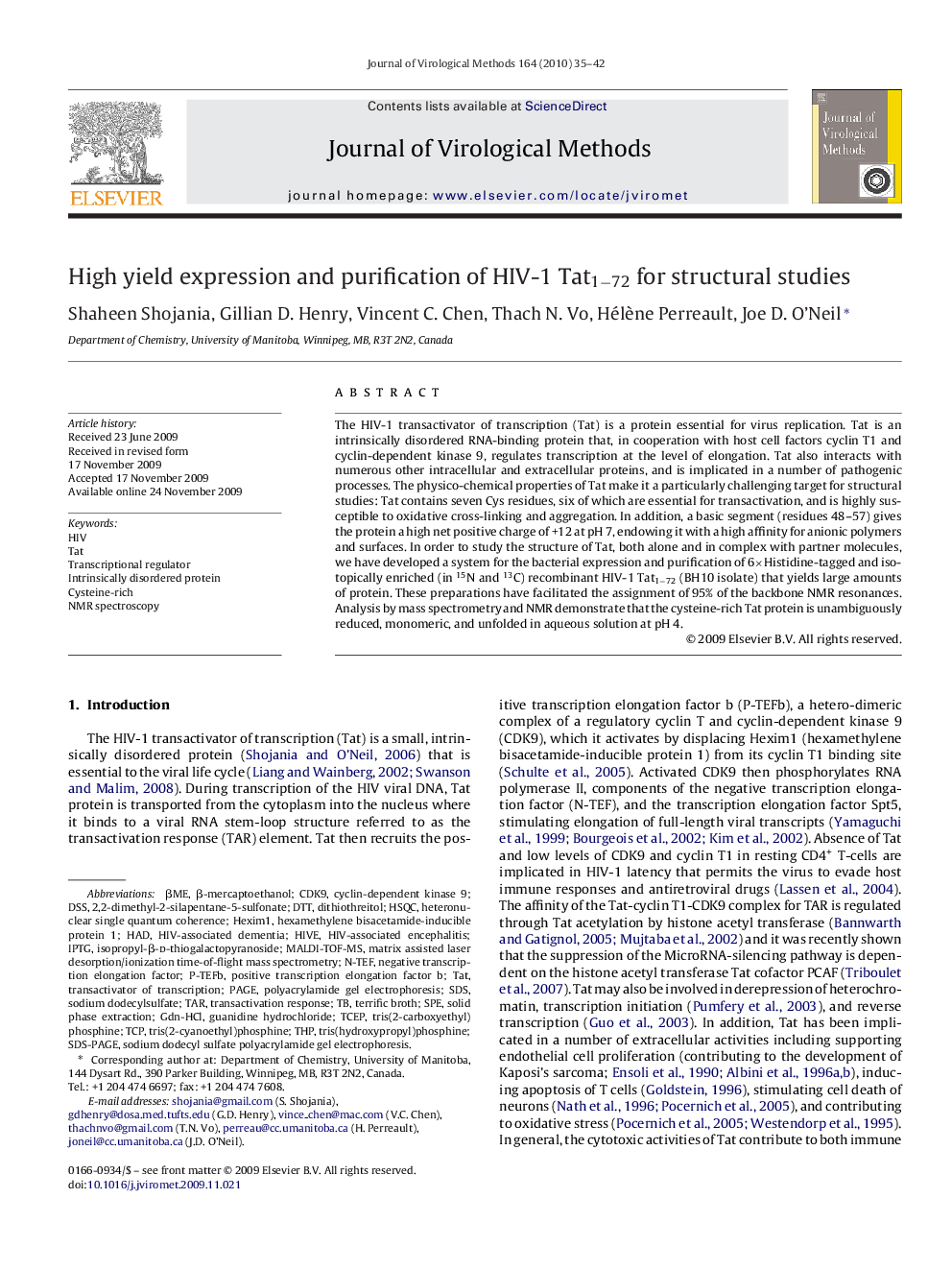| Article ID | Journal | Published Year | Pages | File Type |
|---|---|---|---|---|
| 3407294 | Journal of Virological Methods | 2010 | 8 Pages |
Abstract
The HIV-1 transactivator of transcription (Tat) is a protein essential for virus replication. Tat is an intrinsically disordered RNA-binding protein that, in cooperation with host cell factors cyclin T1 and cyclin-dependent kinase 9, regulates transcription at the level of elongation. Tat also interacts with numerous other intracellular and extracellular proteins, and is implicated in a number of pathogenic processes. The physico-chemical properties of Tat make it a particularly challenging target for structural studies: Tat contains seven Cys residues, six of which are essential for transactivation, and is highly susceptible to oxidative cross-linking and aggregation. In addition, a basic segment (residues 48-57) gives the protein a high net positive charge of +12 at pH 7, endowing it with a high affinity for anionic polymers and surfaces. In order to study the structure of Tat, both alone and in complex with partner molecules, we have developed a system for the bacterial expression and purification of 6ÃHistidine-tagged and isotopically enriched (in N15 and C13) recombinant HIV-1 Tat1â72 (BH10 isolate) that yields large amounts of protein. These preparations have facilitated the assignment of 95% of the backbone NMR resonances. Analysis by mass spectrometry and NMR demonstrate that the cysteine-rich Tat protein is unambiguously reduced, monomeric, and unfolded in aqueous solution at pH 4.
Keywords
DSSIPTGDTTβMEHexim1HSQCCDK92,2-dimethyl-2-silapentane-5-sulfonateβ-mercaptoethanolisopropyl-β-d-thiogalactopyranosideHADHIV-associated dementiadithiothreitolMatrix assisted laser desorption/ionization time-of-flight mass spectrometryMALDI-TOF-MSHiveCyclin-dependent kinase 9heteronuclear single quantum coherence
Related Topics
Life Sciences
Immunology and Microbiology
Virology
Authors
Shaheen Shojania, Gillian D. Henry, Vincent C. Chen, Thach N. Vo, Hélène Perreault, Joe D. O'Neil,
